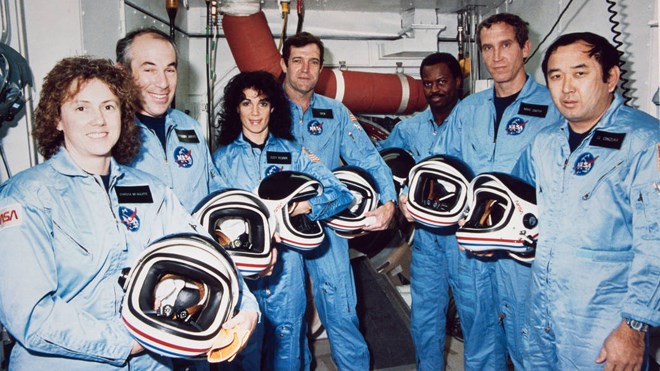Thirty years ago today, the Space Shuttle Challenger disaster shocked the world and changed the way many view space exploration.
On Jan. 28, 1986 the space shuttle broke apart 73 seconds into its flight, leading to the deaths of its seven crew members, which included five NASA astronauts and two payload specialists – including teacher Sharon Christa McAuliffe.
A thorough investigation and federal commission later revealed the shuttle disintegrated after the O-ring seal in one of its rocket boosters failed at liftoff.
The failure caused a breach that allowed pressurized burning gas from inside the rocket to reach the outside, which led to the structural failure of the spacecraft.
NASA shut down its space shuttle program for three years to address the issues that caused the explosion.
“The disaster really highlighted concerns engineers had been raising about the shuttle design,” said Jonathan Jerome, a science communicator at Science North.
The Sudbury science centre has long hosted exhibits that celebrate space travel, exploration and the technologies that have come from NASA's programs.
While the Challenger disaster led to many safety recommendations, the space shuttle program faced a second disaster on Feb. 1, 2003, when the Space Shuttle Columbia exploded upon reentry to Earth's atmosphere.
“Again there were known safety concerns, and the launches were going ahead anyway,” Jerome said.
NASA was under a lot of pressure, he said, to keep costs down and stick to a very busy launch schedule.
But in more recent years, Jerome said private space flight companies, like SpaceX and Blue Origin, have been able to relieve NASA of that burden.
Both companies have successfully tested reusable rockets that should greatly reduce the cost of space travel.
They have also delivered payloads to the International Space Station, tacking over a role NASA's now retired space shuttles handled.
But even with technological advances, space travel remains a risky enterprise.
“The astronauts know this risk, and they still decide the benefits of pushing their boundaries into space are worth all of these risks,” Jerome said.
Join Sudbury.com+
- Messages
- Post a Listing
- Your Listings
- Your Profile
- Your Subscriptions
- Your Likes
- Your Business
- Support Local News
- Payment History
Sudbury.com+ members
Already a +member?
Not a +member?
Sign up for a Sudbury.com+ account for instant access to upcoming contests, local offers, auctions and so much more.
